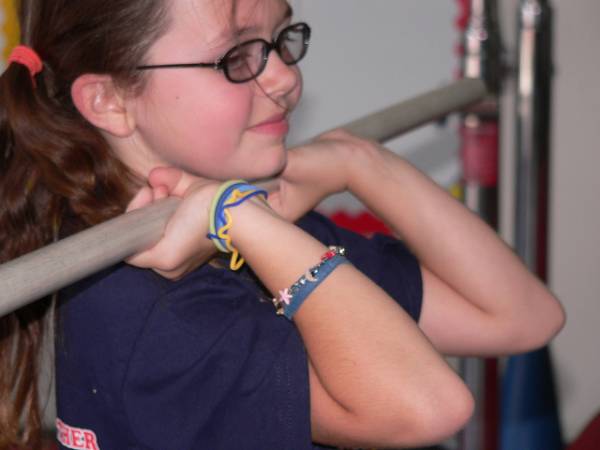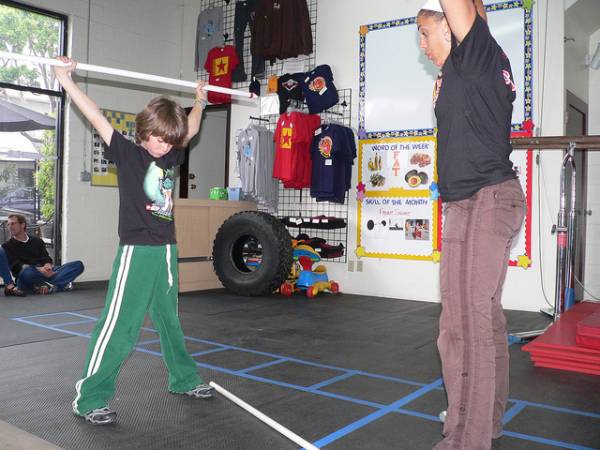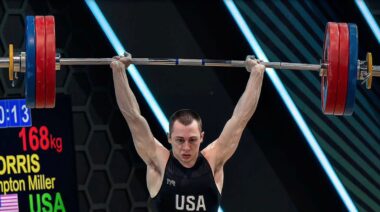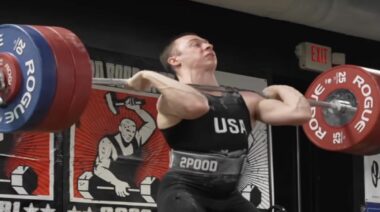Over the last few decades, there has been a trend to begin the training of children at ever-younger ages. This was pointed out most dramatically in 1982 when a fifteen-year-old Naum Suleymanoglu set not only junior, but also senior world records.
For a while, coaches searched for younger and younger athletes until the International Weightlifting Federation (IWF) finally set age minimums for their world championships, fearing they were inadvertently encouraging abuse. Most children simply do not mature that early.
RELATED: 3 Questions to Confirm if Your Child Is Ready to Start a Sport
Today I’m going to address just how our young athletes mature, what periods of development we can capitalize on, and what periods we must approach with caution.
The Life Cycle of a Youth Weightlifter
Back in the 1960s, conventional wisdom held that weight training should not start until after the close of adolescence, most likely at sixteen or seventeen years of age. At the same time, the IWF started recognizing the junior world records. Most records were set by nineteen-year-olds and the standard was quite high. But of course, it would be impossible to get to such high standards without a considerable amount of training. Thus, beginning your career at age seventeen was simply too late.
“An athlete does not become a champion lifter overnight. It generally takes eight to twelve years to hit elite levels – if you’re going to hit them at all.”
That did not stop the debate, though. Many felt that if lifters started very young, perhaps in puberty or before, that they would not be strong enough to lift the weight necessary to develop quickly anyway. It was noticed by many that whether you started early or late, the results tended to even out after a certain number of years.
That brought forth a discussion as to how many years of training a lifter needs to get to the top. An athlete does not become a champion lifter overnight. It generally takes eight to twelve years to hit elite levels – if you’re going to hit them at all. While it makes little difference whether an athlete started early or young, it generally takes elite athletes about the same number of years to reach that level.
RELATED: How to Prepare Kids for Weightlifting Without Weightlifting
It was also noticed there is a “best before” date on most athletes’ careers. The demands of work and family life eventually force the termination of most serious lifting careers. It then becomes apparent that athletes have only a limited window of opportunity in order to accomplish their career goals. And if they start too late, they will be forced to retire before they reach their peak.
Are Age Categories the Best Solution?
Observers of the sport also noticed that the concept of starting everyone at a certain age was an oversimplification. It didn’t matter whether that was age was ten, seventeen, or anywhere in between. The old assumption was that a twelve-year-old was a twelve-year-old, a seventeen-year-old was a seventeen-year-old, etc. But a simple glance into any school will tell you this is simply not true. Girls mature about two years before boys, but individuals in both sexes mature at different ages.

From this, coaches realized that segregating athletes into age groups was not the best way to ensure fair competition. A better way would be to segregate them according to their state of maturation. The big problem with this method would’ve been that the exact dividing line between one level of maturation and another does not exist. Maturation proceeds on a continuum, a difficult thing to measure in a sport where measurements are vital. The result is that we still divide our athletes into age groupings. This is not the ideal solution, but it is easy and quick one.
“Maturation proceeds on a continuum, a difficult thing to measure in a sport where measurements are vital. The result is that we still divide our athletes into age groupings.”
Programming Considerations for Young Weightlifters
If truth be known, most coaches plan the training programs of younger athletes with little regard for their rate of maturation. About all you hear in many places is that if you’re “too young” don’t lift “too much” – whatever either of these concepts means. Have we got something better? Well, research has shown us that we just might.
The key is the athlete’s age of peak height velocity (PHV). As implied, the PHV occurs when a person is growing the quickest. The average age for reaching PVH is twelve for girls and fourteen for boys. Peak weight velocity normally follows shortly after PVH. You have to grow up before you grow out. The growth spurt can last anywhere from 1.5 years (for fast developers) to five years (for slow developers). The PHV is the starting point for determining maturity and, hence, the best age to train the various athletic qualities.
RELATED: How to Progress Weightlifting in Children and Adolescents
Strength, speed, flexibility, technique, and endurance are each vital to all athletes and peak at different ages. It is best for the athlete to develop each at the appropriate age. The window of opportunity for this is only so wide, though. If you train these aspects too late, the athlete will not reach full potential. This accounts for much of the variability in general athletic skills seen in a group of sport aspirants.
Contrary to some coaches’ practice, it is impossible to impose a generic training program for this age range due to differences in the rate and timing of their growth. An important consideration is to decrease loading of the limbs and reduce high-intensity work to avoid overtraining and inflammation of the bone-tendon connections.

During this period the limb levers especially experience an increase in length. Hence, the gangly teenager. But the muscles do not respond until later when peak weight velocity occurs, which allows the muscles to achieve greater size. Until then, these young people experience unfavorable leverage, and this is the cause of the teenager’s awkward motor skills during this phase.
If you’re thinking that all of this will have an effect not only on strength but also on technique, then you are correct. In addition, there is also increased risk of musculoskeletal and epiphyseal (cartilage) injury, so it is imperative to monitor and control training load during these phases.
RELATED: Strength Training Is Good for Kids – Here’s How To Do It
The Message
Though the mechanisms of maturation in young weightlifters may be complicated, the overall message is simple: from a general training and sport-development perspective, it is essential to account for differences in growth and maturation when designing a training curriculum.
References:
1. CWFHC, “Transition Phase.” Long Term Athlete Development. Accessed November 18th, 2014.
Photos courtesy of CFLA Kids.






